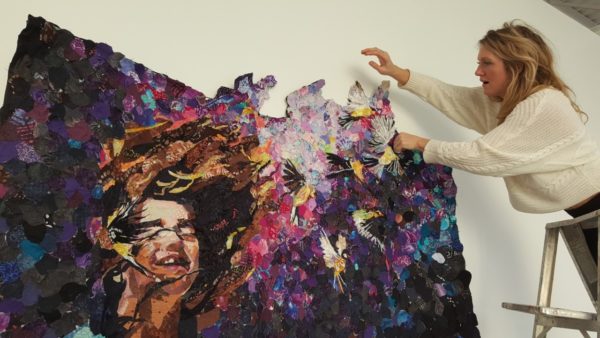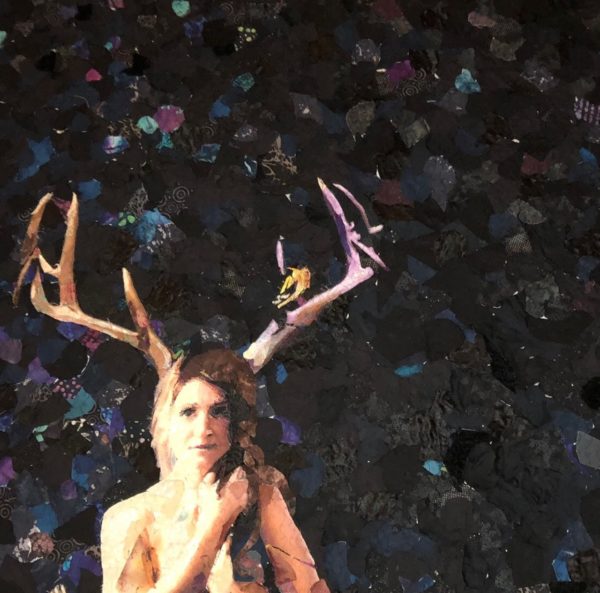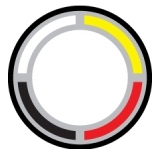
- Details
- By Native News Online Staff
BEMIDJI, Minn. — Blair Treuer is a non-Native woman whose husband and children are Ojibwe, and her new exhibit, “Portraits,” depicts her reflections as a white outsider to the Ojibwe cultural practices and beliefs that shape her Native family’s identity.
Watermark Art Center in Bemidji, Minnesota, hosts Treuer and her first gallery exhibit of “Portraits” at its January 10 opening. It will remain on display through March 28, 2020. Her work, which garnered national attention last year, is a collection of large images constructed with fabrics of different colors, patterns, shapes and sizes sewn together in a quilt-like fashion to create realistic portraits of her family.
She began her love affair with fabric when her children’s participation in an Ojibwe ceremony required her to make blankets as a part of their spiritual offering. She poured everything into their construction all the while teaching herself this new art form. Through this process, she became a “storyteller who paints with fabric and draws with thread.”
In many of her pieces a recurring goldfinch theme is present. The goldfinch is the language bird in Ojibwe culture.
Beyond that, “Self Portrait,” a nude portrait featuring the artist with finches perched on antlers growing from the top of her head, was born from her unique perspective and represents the combination of both despair and hope that she feels as a mother and wife and her purpose in this world.
 "Self Portrait" by Blair Treuer
"Self Portrait" by Blair Treuer
“Self Portrait” received a semi-honorable mention from Art Olympia 2019 in their 3rd Biennial International Open Art Competition in Japan. Meanwhile, “Maddy,” a depiction of family members partaking in the “sugar bush” or tapping of maple trees, received special recognition by Light Space Time’s 9th Annual All Women Online Art Competition.
Watermark Art Center is located at 505 Bemidji Ave. N. Bemidji, Minnesota. The center can be reached at (218) 444-7570 and watermarkartcenter.org. Visit blairtreuer.com for more information.
More Stories Like This
Watermark Art Center to Host “Minwaajimowinan — Good Stories” ExhibitionMuseums Alaska Awards More Than $200,000 to 12 Cultural Organizations Statewide
Zuni Youth Enrichment Project Takes Top Emerging Artist Apprentices to Phoenix for Artistic Exploration and Cultural Immersion
From Dishwasher to Award-Winning Chef: Laguna Pueblo's Josh Aragon Serves Up Albuquerque's Best Green Chile Stew
Rob Reiner's Final Work as Producer Appears to Address MMIP Crisis
Help us defend tribal sovereignty.
At Native News Online, our mission is rooted in telling the stories that strengthen sovereignty and uplift Indigenous voices — not just at year’s end, but every single day.
Because of your generosity last year, we were able to keep our reporters on the ground in tribal communities, at national gatherings and in the halls of Congress — covering the issues that matter most to Indian Country: sovereignty, culture, education, health and economic opportunity.
That support sustained us through a tough year in 2025. Now, as we look to the year ahead, we need your help right now to ensure warrior journalism remains strong — reporting that defends tribal sovereignty, amplifies Native truth, and holds power accountable.
 The stakes couldn't be higher. Your support keeps Native voices heard, Native stories told and Native sovereignty defended.
The stakes couldn't be higher. Your support keeps Native voices heard, Native stories told and Native sovereignty defended.
Stand with Warrior Journalism today.
Levi Rickert (Potawatomi), Editor & Publisher

